Unfolding Nikkei Australian stories: A conversation with Mayu Kanamori
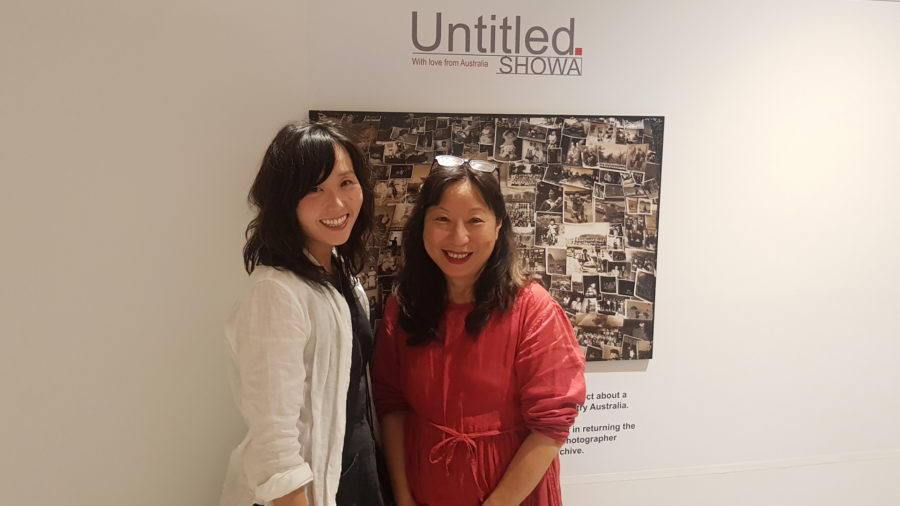 Yuki and Mayu, 2021.
Yuki and Mayu, 2021.The silent voices of the Japanese in Australia.
I keep hearing them.
Voices of the many forgotten Japanese who have lived here.
Forgotten because of the violence of the war.
It has wiped out the memory of those that came here to work and make this place their home.
I can hear their whispers – to be remembered. Or is it to be recognised?
I hear them in the wind, in the surf, in the deserts, in the fields.
Through their burial here, they are part of the landscape of this place.Mayu
===
Kanamori in Yasukichi Murakami: Through a distant lens 2015, performed by Arisa Yura
The history of Japanese Australians is unknown to many of us who live in Australia. Even amongst the Japanese diaspora, there is little knowledge or awareness of the immigrant stories of the Japanese who called this place home decades ago.
Nikkei Australia, a community-led information exchange platform, helps to fill this gap across generations and geographical locations. The organisation was founded in 2013 by a group of researchers who promoted community awareness of the civilian internment of the Japanese in Australia during World War II.
The platform shares detailed accounts of Japanese Australian experiences dating back to 1871, when the first recorded Japanese migrant, an acrobat named Sakuragawa Rikinosuke, emigrated to Queensland. Personal stories told by descendants of early Japanese migrants provide an intimate and profound exploration of Australia’s immigration history, offering new perspectives on the colonial past.
As a child of first-generation Japanese migrants, Nikkei Australia has helped me to shape my identity as a Japanese Australian. Born in Osaka, Japan, my parents and I migrated to Sydney in 1991 on a whim. My parents had ambitions to raise me in an English-speaking Western society to ensure I had every chance of becoming a global citizen, a quality they felt the Japanese education system and society did not foster. I had limited interaction with the Japanese diaspora growing up and acculturation took precedence over connecting with my Japanese heritage.
In 2019, I was fortunate to meet Mayu Kanamori, one of the founding members of Nikkei Australia, after responding to a call to action posted on Nikkei Australia’s Facebook page. The post encouraged young people from the Japanese diaspora to ‘voice our Australian Japanese thoughts and concerns’ in a global research project investigating the relationship we have with our Japanese identity. I never imagined that taking part in this survey would open avenues to meet prominent members of the Japanese Australian community.
Mayu Kanamori’s contribution to Nikkei Australia is a fragment of her life’s work as a multidisciplinary storyteller. Her practice centres around unearthing the stories of the Japanese experience, ‘giving a voice’ to individuals. She has presented solo and collective projects across various media, including photography, theatre, video installation, documentary film and community-engaged projects.
Her artistic career spans almost three decades and she has received numerous awards and commendations, including the United Nations Association Media Peace Award in the Promotion of Multicultural Issues for her work as a radio producer, the Broome NAIDOC’s Non-Indigenous reconciliation award in 2001 for her work ‘The Heart of the Journey’, as well as being a finalist for the 2004 Walkley Awards for Excellence in Journalism.
As an arts practitioner, I feel privileged to have met a fellow Japanese Australian whose work I admire, and whom I look up to as a mentor. In the auditorium at the Art Gallery of NSW, I sit with Mayu and she reassures me with her calm and warm manner as we speak about her childhood growing up in Tokyo, the evolution of her artistic practice, her cross-cultural collaborations and our common search to understanding our identity within the Australian landscape.
Mayu Kanamori was born and raised in Tokyo by her Japanese mother and father. She grew up in a family environment where ‘creativity was encouraged’. Her father Kaoru Kanamori was an artist, a renowned theatre scenographer, and at a young age, her mother exposed Mayu to Western cultural values through her choice of schooling. As we exchanged stories about our upbringings, it became apparent that her parents were progressive in their approach to raising Mayu.
‘My mother, when I was two years and ten months old, sent me to a pre-school just around the corner from where we were in Tokyo. It was not a Japanese pre-school; American mothers actually ran it.’
‘When I finished pre-school, and it was time to go to primary school, my mother asked me at the time if I wanted to continue in the American education system. Do I want to go to an American school, or do I want to go to a Japanese school? Apparently, I had said that I preferred the American school and that had an impact on the rest of my life. I went to the American school, the American high school and then I’ve come to Australia.’
She moved to Melbourne in 1981 on a student visa to attend the Footscray Institute of Technology (now known as Victoria University), studying Australian cultural studies and Australian politics, then later writing and philosophy. It was an ‘eye-opening’ experience for Mayu to move from a homogenised American school environment in Tokyo to integrating into the multicultural landscape of Australia. She was ‘surprised’ by the cultural and ethnic diversity in Footscray, which was predominantly working-class migrants from Greek, Italian and Vietnamese backgrounds. She commented, ‘Australians spoke English, but they are very different people’.
In 1989, she moved to Sydney, where she met an investigative journalist who became her romantic partner. He encouraged Mayu to use his analogue camera. She became his documentary photographer while he was assigned to report from Tokyo between 1992 and 1995.
During this period, she captured intimate and unstaged moments of everyday life in Japan. Her photographs were published in The Age and the Sydney Morning Herald and she held her first exhibition titled ‘The Unseen faces of Japan’ in Sydney in 1996. Mayu’s work challenged racial stereotypes and she sought to provide nuanced representations of Japanese people in their various subcultures. The exhibition offered Australian and non-Japanese audiences a chance to form a deeper understanding of the country she came from.
Throughout her career, Mayu has drawn inspiration from the history of the places she has been. She uncovers the marginalised stories of cross-cultural interactions, focusing on the history of Japanese migrants and First Nations people. The catalyst for her award-winning work, ‘The Heart of the Journey’ from 2000, was a non-fiction book that she read on the plane to Broome by Japanese author Fujio Nakano Mari to Masatora (1986), which tells of a romance between an Aboriginal woman and a Japanese pearl diver who was living in Broome.
‘It was one of those things that opened my eyes to this place [Broome]. I was going on a holiday, and it not only had Japanese history but history that crossed between Japanese people and Australia and Indigenous peoples. And it really got me interested. If there was a love story, there would be children, that was what I thought.’
Upon arriving in Broome, she picked up the phonebook to look for Japanese surnames and she met a group of people who had mixed Japanese and Indigenous heritage. She took portraits of them which she printed and sent back once she returned to Sydney.
Lucy Dann was the only person that kept in touch with Mayu after she had sent the photographs. Lucy shared her experience of growing up not knowing her father. In her twenties, she discovered that her biological father was a Japanese man who worked in Broome’s pearling industry. She was eager to find out more about her father and Japanese heritage and Mayu was the key to helping her to unlock her past. With over 350 still images and audio recordings of conversations between Lucy and Mayu, ‘The Heart of the Journey’ follows the story of how Lucy was reunited with her Japanese family and heritage.
Mayu builds trust and collegiality with her subjects, which is reflected in the work she creates. Her process-driven approach allows for conversations to materialise while she forms meaningful relationships with her collaborators. When I asked about her creative collaborations and working with people across different cultures and lived experiences, she responded:
‘I think everybody brings their strengths and weaknesses into a project. Bringing in your strengths is easy, but when we bring our own weaknesses, that’s when we love each other through the collaborative process, be loving of each other, and support each other, whether it’s a large group or small group. Those weaknesses that we bring actually can become a strength if you work with other people.
‘And so when I’m collaborating with somebody, my first instinct is I’ve got to become friends with them so that they can accept my weaknesses. And I think that’s what I did with Lucy. I became friends first, and she had her fears, and I had mine. There were differences between us, but we did have a goal in mind, which was to see if we could find her father and that we would document it no matter what happens.’
Mayu’s projects often start as chance encounters which evolve through exchange and collaboration. One of her most inspiring projects has been ‘In Repose’ from 2010, the outcome of a creative partnership with Japanese koto master, Satsuki Odamura, former principal dancer from the Sydney Dance Company, Wakako Asano, and sound designer Vic McEwan. Iterations of this project were presented as site-specific multi-art works at Japanese gravesites in Townsville, Broome and Thursday Island.
The live performances were presented in remote areas where Japanese people were laid to rest. Audiences were invited to take part in the traditional Japanese practice of kūyo, where participants would give ceremonial offerings of incense, water and prayer to the deceased. Her creative team consulted extensively with local Indigenous Elders and community leaders and there was a pivotal moment that resonated with Mayu when the work was presented on Thursday Island.
‘There was a lot of exchange between the local people, whether they were the Torres Strait Islanders or otherwise, and the artists that went up were very much welcomed because we were able to exchange different views on death and death rituals or death ceremonies.’
‘It was a learning experience for all of us. When we had the actual performance, one of the main things that happened, which I thought was very important, is that we had a Welcome to Country delivered by a local Elder who faced the Japanese graves when he welcomed in language.
‘Now usually, when you think of Welcome to Country, you have an Elder address the audience. We had an audience, but he addressed the graves. That was a poignant moment because it would have been the first time those Japanese people who worked and lived on Thursday Island, now part of the landscape, had been welcomed by the traditional Elders, custodians of the land, where they are now buried and are cared for.’
I have often questioned whether I would choose to be buried with my family and ancestors in Japan, or whether Australia would be my final place to rest. It raises conflicting feelings I have about my Japanese heritage and my Japanese Australian identity. What does it mean to be a migrant in this country when the history of this place is still evolving? Amidst these challenging discussions, Mayu teaches me a Japanese concept, Hone o uzumeru kakukgo. It translates to ‘the preparedness and determination to bury one’s bone’, meaning the decision one makes to reside in another place until their death. During these times of great turbulence and uncertainty where people like Mayu and I are physically distant from our families back in Japan, this statement resonates with us now more than ever.
This article and corresponding interview with Mayu Kanamori were written and recorded on the unceded lands of the Gadigal people of the Eora Nation.
====
This interview is from Diversity Arts Australia’s Pacesetters Creative Archives project, a chronicle of the histories of creative practice of migrant, refugee and culturally diverse communities in Australia. Find out more at www.diversityarts.org.au
Published September 30, 2021Art and artists
Part of Pacesetters Creative Archives: The stories of migrant, refugee and culturally diverse arts practitioners in Australia, chronicled through conversation. The Pacesetters Creative Archives is an initiative of Diversity Arts Australia.All Pacesetters Creative Archives essays →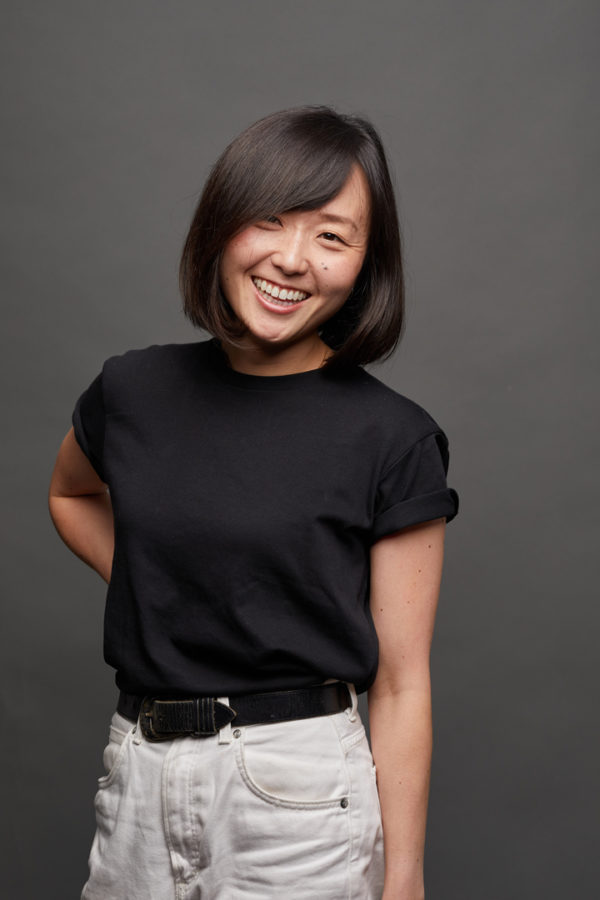
Yuki Kawakami
Yuki Kawakami is a creative producer who is interested in socially inclusive community-led projects...Essays by Yuki Kawakami →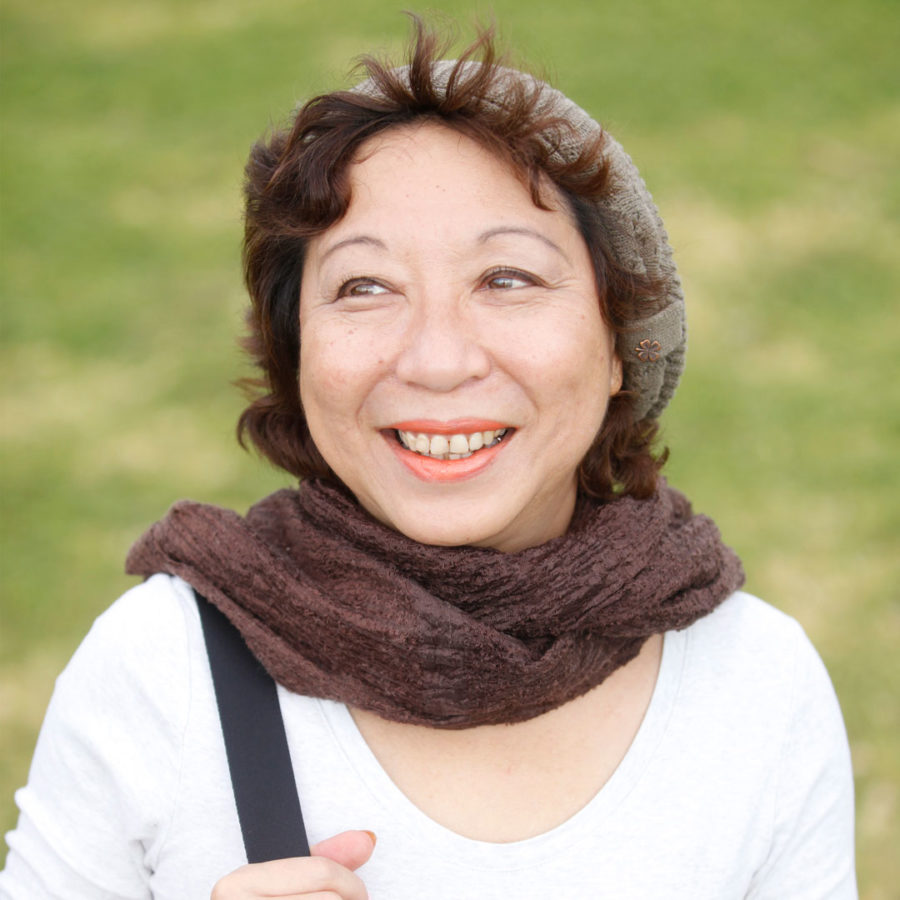
Mayu Kanamori
Mayu Kanamori is a Sydney-based storyteller working across mediums including theatre, performance, photography, video,...Essays by Mayu Kanamori →
More from Pacesetters Creative Archives
Mayu Kanamori Boey Kim Cheng Mayu Kanamori Boey Kim Cheng
More like this
Related Essays
DOMESTICITY AND CARE ESSAY: GEORGE KOUVAROSON JOHN CONOMOS
The Keys to the House: John Conomos’ The Girl From the Sea
The work of homemaking in which the filmmaker is engaged is thus not only about the creation of a continuity between past and present. It is also about the future – how we remember the person that we will become.
Jul. 2021 • Art and artists • Migration • Screen culture • Domesticity and Care
REVIEW: MARTIN EDMONDON DANIEL THOMAS
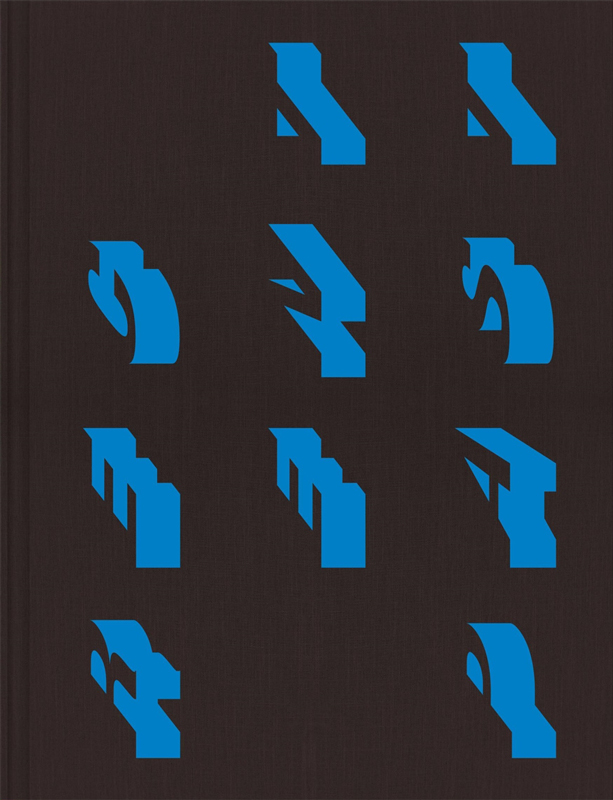
Grace In All Simplicity
One of the pleasures of this book is that it introduces you to artists whose work you may not know very much about; another is to read Daniel Thomas on artists whose work you do know and love.
Jun. 2021 • Art and artists • Australian literature • Memoir • Non-fiction
POWERFUL AND MOVING ESSAY: MARTIN EDMONDON TRANS-TASMAN ART EXCHANGES
‘Differant Curioes’:
Trans-Tasman art exchanges 1770-1970
Incoherence, along with a lack of methodological rigour, is particularly apparent in most writing (not that there is much of it) about how practitioners in the visual arts in Australia and New Zealand have interacted with each other since James Cook sailed over the horizon in 1770.
May. 2021 • Art and artists • NZ-Aotearoa • Powerful and Moving
REVIEW: JOHN ENCARNACAOON MARK MORDUE
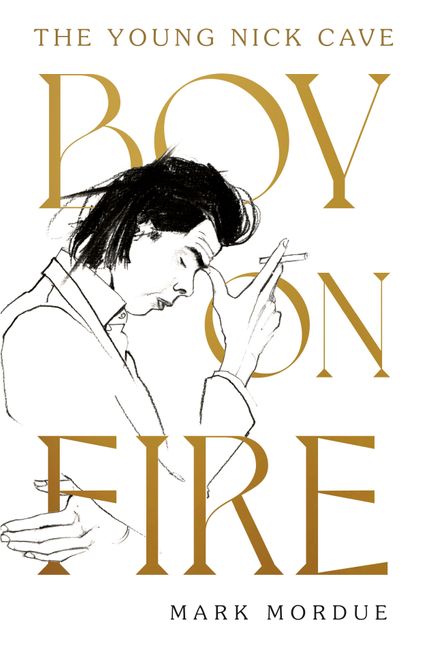
The Boy from Wang
Mark Mordue’s compelling biography asserts that Nick Cave’s self-mythology is a product of both genuine artistic obsessions, and of the networks of friends and family uniquely equipped to guide and nurture them.
May. 2021 • Art and artists • Australian literature • Biography • Non-fiction
PACESETTERS CREATIVE ARCHIVES INTERVIEW: BOEY KIM CHENG
Many Shells in a Windy Place: An Interview with Boey Kim Cheng
For me, the fact that Boey exists as a poet at all, and that he continues to write poetry, is a miracle altogether.
Apr. 2021 • On writing • Pacesetters Creative Archives
We acknowledge the traditional custodians of the lands on which we work, the Burramattagal people of the Darug nation, and pay our respects to elders past, present, and emerging. Sovereignty was never ceded, and the struggles for justice are ongoing. We acknowledge the traditional custodians of the lands this digital platform reaches.
Subscribe to our free newsletter for weekly updates from the SRB:
The history of Japanese Australians is unknown to many of us who live in Australia. Even amongst the Japanese diaspora, there is little knowledge or awareness of the immigrant stories of the Japanese who called this place home decades ago.
Nikkei Australia, a community-led information exchange platform, helps to fill this gap across generations and geographical locations. The organisation was founded in 2013 by a group of researchers who promoted community awareness of the civilian internment of the Japanese in Australia during World War II.
The platform shares detailed accounts of Japanese Australian experiences dating back to 1871, when the first recorded Japanese migrant, an acrobat named Sakuragawa Rikinosuke, emigrated to Queensland. Personal stories told by descendants of early Japanese migrants provide an intimate and profound exploration of Australia’s immigration history, offering new perspectives on the colonial past.
As a child of first-generation Japanese migrants, Nikkei Australia has helped me to shape my identity as a Japanese Australian. Born in Osaka, Japan, my parents and I migrated to Sydney in 1991 on a whim. My parents had ambitions to raise me in an English-speaking Western society to ensure I had every chance of becoming a global citizen, a quality they felt the Japanese education system and society did not foster. I had limited interaction with the Japanese diaspora growing up and acculturation took precedence over connecting with my Japanese heritage.
In 2019, I was fortunate to meet Mayu Kanamori, one of the founding members of Nikkei Australia, after responding to a call to action posted on Nikkei Australia’s Facebook page. The post encouraged young people from the Japanese diaspora to ‘voice our Australian Japanese thoughts and concerns’ in a global research project investigating the relationship we have with our Japanese identity. I never imagined that taking part in this survey would open avenues to meet prominent members of the Japanese Australian community.
Mayu Kanamori’s contribution to Nikkei Australia is a fragment of her life’s work as a multidisciplinary storyteller. Her practice centres around unearthing the stories of the Japanese experience, ‘giving a voice’ to individuals. She has presented solo and collective projects across various media, including photography, theatre, video installation, documentary film and community-engaged projects.
Her artistic career spans almost three decades and she has received numerous awards and commendations, including the United Nations Association Media Peace Award in the Promotion of Multicultural Issues for her work as a radio producer, the Broome NAIDOC’s Non-Indigenous reconciliation award in 2001 for her work ‘The Heart of the Journey’, as well as being a finalist for the 2004 Walkley Awards for Excellence in Journalism.
As an arts practitioner, I feel privileged to have met a fellow Japanese Australian whose work I admire, and whom I look up to as a mentor. In the auditorium at the Art Gallery of NSW, I sit with Mayu and she reassures me with her calm and warm manner as we speak about her childhood growing up in Tokyo, the evolution of her artistic practice, her cross-cultural collaborations and our common search to understanding our identity within the Australian landscape.
Mayu Kanamori was born and raised in Tokyo by her Japanese mother and father. She grew up in a family environment where ‘creativity was encouraged’. Her father Kaoru Kanamori was an artist, a renowned theatre scenographer, and at a young age, her mother exposed Mayu to Western cultural values through her choice of schooling. As we exchanged stories about our upbringings, it became apparent that her parents were progressive in their approach to raising Mayu.
‘My mother, when I was two years and ten months old, sent me to a pre-school just around the corner from where we were in Tokyo. It was not a Japanese pre-school; American mothers actually ran it.’
‘When I finished pre-school, and it was time to go to primary school, my mother asked me at the time if I wanted to continue in the American education system. Do I want to go to an American school, or do I want to go to a Japanese school? Apparently, I had said that I preferred the American school and that had an impact on the rest of my life. I went to the American school, the American high school and then I’ve come to Australia.’
She moved to Melbourne in 1981 on a student visa to attend the Footscray Institute of Technology (now known as Victoria University), studying Australian cultural studies and Australian politics, then later writing and philosophy. It was an ‘eye-opening’ experience for Mayu to move from a homogenised American school environment in Tokyo to integrating into the multicultural landscape of Australia. She was ‘surprised’ by the cultural and ethnic diversity in Footscray, which was predominantly working-class migrants from Greek, Italian and Vietnamese backgrounds. She commented, ‘Australians spoke English, but they are very different people’.
In 1989, she moved to Sydney, where she met an investigative journalist who became her romantic partner. He encouraged Mayu to use his analogue camera. She became his documentary photographer while he was assigned to report from Tokyo between 1992 and 1995.
During this period, she captured intimate and unstaged moments of everyday life in Japan. Her photographs were published in The Age and the Sydney Morning Herald and she held her first exhibition titled ‘The Unseen faces of Japan’ in Sydney in 1996. Mayu’s work challenged racial stereotypes and she sought to provide nuanced representations of Japanese people in their various subcultures. The exhibition offered Australian and non-Japanese audiences a chance to form a deeper understanding of the country she came from.
Throughout her career, Mayu has drawn inspiration from the history of the places she has been. She uncovers the marginalised stories of cross-cultural interactions, focusing on the history of Japanese migrants and First Nations people. The catalyst for her award-winning work, ‘The Heart of the Journey’ from 2000, was a non-fiction book that she read on the plane to Broome by Japanese author Fujio Nakano Mari to Masatora (1986), which tells of a romance between an Aboriginal woman and a Japanese pearl diver who was living in Broome.
‘It was one of those things that opened my eyes to this place [Broome]. I was going on a holiday, and it not only had Japanese history but history that crossed between Japanese people and Australia and Indigenous peoples. And it really got me interested. If there was a love story, there would be children, that was what I thought.’
Upon arriving in Broome, she picked up the phonebook to look for Japanese surnames and she met a group of people who had mixed Japanese and Indigenous heritage. She took portraits of them which she printed and sent back once she returned to Sydney.
Lucy Dann was the only person that kept in touch with Mayu after she had sent the photographs. Lucy shared her experience of growing up not knowing her father. In her twenties, she discovered that her biological father was a Japanese man who worked in Broome’s pearling industry. She was eager to find out more about her father and Japanese heritage and Mayu was the key to helping her to unlock her past. With over 350 still images and audio recordings of conversations between Lucy and Mayu, ‘The Heart of the Journey’ follows the story of how Lucy was reunited with her Japanese family and heritage.
Mayu builds trust and collegiality with her subjects, which is reflected in the work she creates. Her process-driven approach allows for conversations to materialise while she forms meaningful relationships with her collaborators. When I asked about her creative collaborations and working with people across different cultures and lived experiences, she responded:
‘I think everybody brings their strengths and weaknesses into a project. Bringing in your strengths is easy, but when we bring our own weaknesses, that’s when we love each other through the collaborative process, be loving of each other, and support each other, whether it’s a large group or small group. Those weaknesses that we bring actually can become a strength if you work with other people.
‘And so when I’m collaborating with somebody, my first instinct is I’ve got to become friends with them so that they can accept my weaknesses. And I think that’s what I did with Lucy. I became friends first, and she had her fears, and I had mine. There were differences between us, but we did have a goal in mind, which was to see if we could find her father and that we would document it no matter what happens.’
Mayu’s projects often start as chance encounters which evolve through exchange and collaboration. One of her most inspiring projects has been ‘In Repose’ from 2010, the outcome of a creative partnership with Japanese koto master, Satsuki Odamura, former principal dancer from the Sydney Dance Company, Wakako Asano, and sound designer Vic McEwan. Iterations of this project were presented as site-specific multi-art works at Japanese gravesites in Townsville, Broome and Thursday Island.
The live performances were presented in remote areas where Japanese people were laid to rest. Audiences were invited to take part in the traditional Japanese practice of kūyo, where participants would give ceremonial offerings of incense, water and prayer to the deceased. Her creative team consulted extensively with local Indigenous Elders and community leaders and there was a pivotal moment that resonated with Mayu when the work was presented on Thursday Island.
‘There was a lot of exchange between the local people, whether they were the Torres Strait Islanders or otherwise, and the artists that went up were very much welcomed because we were able to exchange different views on death and death rituals or death ceremonies.’
‘It was a learning experience for all of us. When we had the actual performance, one of the main things that happened, which I thought was very important, is that we had a Welcome to Country delivered by a local Elder who faced the Japanese graves when he welcomed in language.
‘Now usually, when you think of Welcome to Country, you have an Elder address the audience. We had an audience, but he addressed the graves. That was a poignant moment because it would have been the first time those Japanese people who worked and lived on Thursday Island, now part of the landscape, had been welcomed by the traditional Elders, custodians of the land, where they are now buried and are cared for.’
I have often questioned whether I would choose to be buried with my family and ancestors in Japan, or whether Australia would be my final place to rest. It raises conflicting feelings I have about my Japanese heritage and my Japanese Australian identity. What does it mean to be a migrant in this country when the history of this place is still evolving? Amidst these challenging discussions, Mayu teaches me a Japanese concept, Hone o uzumeru kakukgo. It translates to ‘the preparedness and determination to bury one’s bone’, meaning the decision one makes to reside in another place until their death. During these times of great turbulence and uncertainty where people like Mayu and I are physically distant from our families back in Japan, this statement resonates with us now more than ever.
This article and corresponding interview with Mayu Kanamori were written and recorded on the unceded lands of the Gadigal people of the Eora Nation.
====
This interview is from Diversity Arts Australia’s Pacesetters Creative Archives project, a chronicle of the histories of creative practice of migrant, refugee and culturally diverse communities in Australia. Find out more at www.diversityarts.org.au
Published September 30, 2021Art and artists
Part of Pacesetters Creative Archives: The stories of migrant, refugee and culturally diverse arts practitioners in Australia, chronicled through conversation. The Pacesetters Creative Archives is an initiative of Diversity Arts Australia.All Pacesetters Creative Archives essays →

Yuki Kawakami
Yuki Kawakami is a creative producer who is interested in socially inclusive community-led projects...Essays by Yuki Kawakami →

Mayu Kanamori
Mayu Kanamori is a Sydney-based storyteller working across mediums including theatre, performance, photography, video,...Essays by Mayu Kanamori →
More from Pacesetters Creative Archives
Mayu Kanamori Boey Kim Cheng Mayu Kanamori Boey Kim Cheng
More like this
Related Essays
DOMESTICITY AND CARE ESSAY: GEORGE KOUVAROSON JOHN CONOMOS
The Keys to the House: John Conomos’ The Girl From the Sea
The work of homemaking in which the filmmaker is engaged is thus not only about the creation of a continuity between past and present. It is also about the future – how we remember the person that we will become.
Jul. 2021 • Art and artists • Migration • Screen culture • Domesticity and Care
REVIEW: MARTIN EDMONDON DANIEL THOMAS

Grace In All Simplicity
One of the pleasures of this book is that it introduces you to artists whose work you may not know very much about; another is to read Daniel Thomas on artists whose work you do know and love.
Jun. 2021 • Art and artists • Australian literature • Memoir • Non-fiction
POWERFUL AND MOVING ESSAY: MARTIN EDMONDON TRANS-TASMAN ART EXCHANGES
‘Differant Curioes’:
Trans-Tasman art exchanges 1770-1970
Incoherence, along with a lack of methodological rigour, is particularly apparent in most writing (not that there is much of it) about how practitioners in the visual arts in Australia and New Zealand have interacted with each other since James Cook sailed over the horizon in 1770.
May. 2021 • Art and artists • NZ-Aotearoa • Powerful and Moving
REVIEW: JOHN ENCARNACAOON MARK MORDUE

The Boy from Wang
Mark Mordue’s compelling biography asserts that Nick Cave’s self-mythology is a product of both genuine artistic obsessions, and of the networks of friends and family uniquely equipped to guide and nurture them.
May. 2021 • Art and artists • Australian literature • Biography • Non-fiction
PACESETTERS CREATIVE ARCHIVES INTERVIEW: BOEY KIM CHENG
Many Shells in a Windy Place: An Interview with Boey Kim Cheng
For me, the fact that Boey exists as a poet at all, and that he continues to write poetry, is a miracle altogether.
Apr. 2021 • On writing • Pacesetters Creative Archives
We acknowledge the traditional custodians of the lands on which we work, the Burramattagal people of the Darug nation, and pay our respects to elders past, present, and emerging. Sovereignty was never ceded, and the struggles for justice are ongoing. We acknowledge the traditional custodians of the lands this digital platform reaches.
Subscribe to our free newsletter for weekly updates from the SRB:
No comments:
Post a Comment